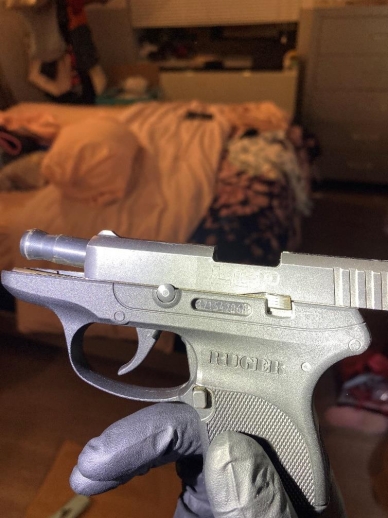Adams Administration, Legislators, and Advocates Push for New York City to Gain Power to Set Speed Limits, Control Automated Traffic Enforcement
City Asking for Proven Tools to Combat COVID-Fueled Rise in Traffic Violence, Increase in Crashes Occurring When Speed Cameras Are Off
New York City Mayor Eric Adams today led a coalition of administration officials, legislators, and advocates urging Albany to give New York City control of critical tools to tackle the spike in traffic violence that has played out across the city throughout the COVID-19 pandemic. Joined by senior administration officials, members of the state Legislature and the City Council, transportation advocates, and New Yorkers whose families have been affected by traffic violence, Mayor Adams called on the state Legislature to pass legislation empowering the city to set speed limits and control the automated traffic enforcement program. Under current law, speed cameras in the automated enforcement program can only be active Monday to Friday, 6:00 AM to 10:00 PM, and the program is set to expire this year.
“No family should have to suffer the loss of loved one to traffic violence, but that’s what can happen when a speeding car drives through a red light,” said Mayor Adams. “My job is to prevent New Yorkers from dying in our streets, and I need Albany to give me the tools to do my job. I want New Yorkers to hold me accountable for my decisions and my results, and that means I need home rule control over our speed cameras and red-light cameras. This is about keeping New Yorkers safe.”
Mayor Adams and the coalition visited the intersection of Ocean Avenue and Beverley Road near P.S. 245 in Flatbush, Brooklyn — the site of a fatal speeding crash that took place on August 18, 2020. In that incident, the driver of a speeding car ran a red light at high speed, ramming a second car in its side. An 18-year-old in the rear seat of the second car, Isaiah Benloss, suffered a traumatic brain injury and died in November 2021. Since the crash occurred at 3:30 AM on a Tuesday, the speed cameras were turned off, as required by New York state law.
The automated enforcement program has been highly effective when speed cameras are active, as speeding violations near the intersection of Ocean Avenue and Beverley Road have declined 89 percent since the installation of cameras began around P.S. 245 in 2019. Overall, since the start of the speed camera automated enforcement program in 2014, speeding violations are down 72 percent on average at camera locations during the hours they operate. Meanwhile, traffic violence has skyrocketed nationwide during the pandemic, including in New York City — and 59 percent of traffic fatalities now occur during hours when the city’s speed cameras cannot operate, inhibiting the city’s ability to identify drivers and take appropriate actions. Last year, more than one in three fatal on-street crashes occurred in school zones during hours when cameras were required to be inactive.
The Adams administration supports legislation establishing local control in the following areas:
- School Zone Speed Cameras: Without action by the state Legislature, New York City’s authority to operate nearly 2,000 cameras in 750 school speed zones will expire this year. The city seeks control over the program to ensure it continues and to lift the limits on the hours this life-saving program is permitted to operate.
- Red-Light Cameras: In 1993, New York City was among the first major American cities to receive state authorization for red-light cameras. While the Legislature has renewed the law multiple times since initial passage, the number of allowed camera locations has remained at 150, and fines have remained at $50 since inception, preventing a system of escalating fines for repeat offenders.
- Bus Lane Enforcement: Under state law, the New York City Department of Transportation (DOT) and the Metropolitan Transportation Authority are authorized to operate stationary and on-bus automated cameras to enforce bus lane restrictions but not violations that impede operations on bus routes with no bus lane.
- Local Speed Limits: Changes to the default speed limit in New York City require state authorization, which last came in 2014. Sammy’s Law, named after Samuel Cohen Eckstein, a 12-year-old who was killed by a speeding driver in Park Slope in 2013, would give New York City the authority to set safer speed limits on certain streets.
“Speed cameras save lives, as do lower speed limits,” said DOT Commissioner Ydanis Rodriguez. “Unfortunately, as a former councilmember, I know too well that New York City is not always able to control our destiny around public safety, which means that some critical life-saving changes to our streets happen too slowly. New York City has been a model for Vision Zero cities across the country, so based on our proven success, I am joining the mayor in calling on the state to give the city the authority to manage traffic safety — including all our automated enforcement programs.”
“The NYPD fully supports the expansion of automated enforcement. The data provided by DOT is clear — speed cameras save lives,” said New York City Police Department Chief of Transportation Kim Y. Royster. “The NYPD will continue to supplement speed enforcement on New York City’s highways and local roads. Speed is a major factor in determining the severity of injuries, and the NYPD will continue in its mission of educating the public about the dangers of speeding and taking enforcement action against speeding drivers.”
“Speeding is dangerous and all too common among drivers here in New York City,” said New York City Department of Health and Mental Hygiene Commissioner Dr. Ashwin Vasan. “Automated enforcement works. It is an important and necessary tool in making our streets safer. We need to continue all efforts to reduce and prevent traffic deaths and serious injuries. I stand by the mayor and our sister Vision Zero agencies to support local control of speed cameras and speed limits as a proven public health measure that saves lives.”
“New York City deserves safe streets,” said New York City Taxi and Limousine Commission Acting Commissioner and Chair Ryan Wanttaja. “Automated enforcement has proven time and time again to save lives, making our streets safer for pedestrians, bicyclists, and law-abiding drivers, including the professional TLC-licensed drivers that keep our city moving 24/7. I join Mayor Adams in calling on the state to give New York City the tools it needs to keep our streets safe for everyone.”
“Keeping our city safe includes keeping our streets safe,” said New York City Department of Citywide Administrative Services (DCAS) Commissioner Dawn M. Pinnock. “With support from our colleagues in Albany, we can save lives and make New York City’s streets safer for all road users. At DCAS, in our role managing the city’s municipal vehicle fleet, we are investing in technology and employee training to prevent collisions and set the standard for fleet safety.”
“Speed cameras, lower speed limits, and bus lane enforcement — simply put — save lives,” said New York City Comptroller Brad Lander. “New York City needs the ability to tackle our epidemic of traffic violence with effective tools to make our streets safer. I urge Albany to give us the power to do so.”
“Speed limits and speed cameras save lives, and we must act immediately to make our streets safer,” said Bronx Borough President Vanessa L. Gibson. “Local control for traffic safety would allow for those closest to the problems to address the needs, and I applaud Mayor Adams and Commissioner Rodriguez for their efforts to make safety our priority.”
“The government powers and mechanisms to keep our streets and commuters safe should be placed at the local level — to elected officials and community groups who know what’s occurring on a street-by-street basis,” said Brooklyn Borough President Antonio Reynoso. “New York City must have local control of our traffic laws and measures to provide safety to all.”








